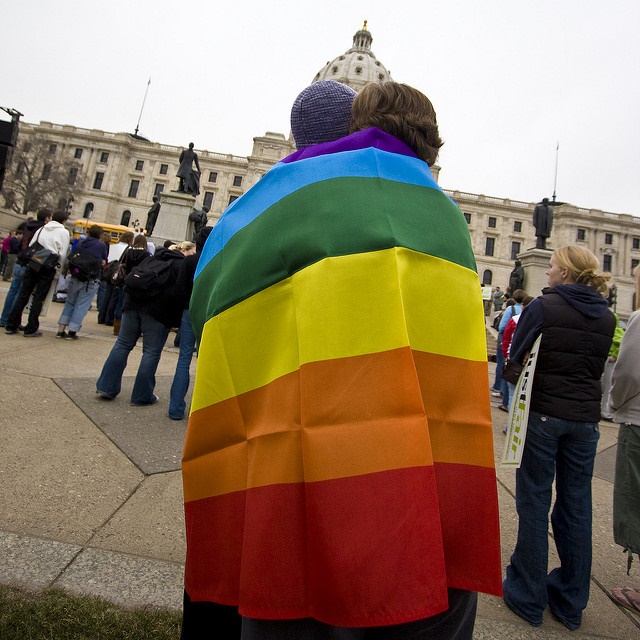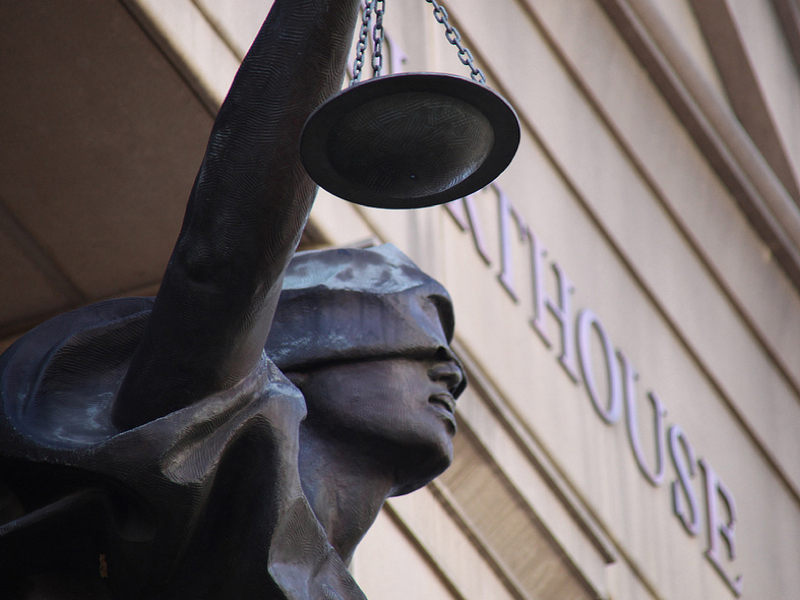The United States Supreme Court once wrote: “The nature of injustice is that we may not always see it in our own times.”
Slaves saw great injustice in their own time. Women, Native Americans, African Americans, the LGBTQ community – all have and are still experiencing great injustice in their own times.
Perhaps it would have been more accurate if the Court had instead written that those who hold power may be unwilling to see injustice in their own time because it does not serve their interests.
Injustice Today
In our own time, today, Americans – or we should say, those Americans who are willing – are seeing injustice unfold before their eyes.
People are gathering in the streets. They are organizing to protest actions of the new administration, including an immigration ban stripping rights of human beings based on ethnicity and religion, threatened cuts in women’s health care provided by Planned Parenthood, and the construction of the Dakota Access Pipeline through ancestral Sioux tribal lands.

The faces of a protest by ashokboghani, Flickr Creative Commons 012917
Many are asking what they can do, how to affect change.
As we seek to move forward, we must first look back, and learn from others who saw injustice in their own times. It’s from that history of struggle – for abolition, suffrage, civil rights, gay rights – that we can learn how to transform mobilization into movement and resistance into real change.
Successful Movements = Cultural & Legal Change
Central to this is understanding that successful movements advance both cultural change and legal change. One cannot happen without the other.
The Supreme Court’s 2015 decision in Obergefell v. Hodges is instructive. In that case, the Court found a Fourteenth Amendment constitutional right for same-sex couples to marry.
In its decision, the Court acknowledged the mobilization, the struggle, and the organizing that had preceded its decision. It recognized the decades of effort that had made its ruling possible. The Court explained:
There may be an initial inclination to await further legislation, litigation, and debate, but referenda, legislative debates, and grassroots campaigns; studies and other writings; and extensive litigation in state and federal courts have led to an enhanced understanding of the issue.
Translated, the “enhanced understanding of the issue” means that the injustice was finally able to be seen – willingly or not – by the general public and by those in power.
Once revealed, it made the denial of certain rights to gays and lesbians no longer tolerable by society. And the Court responded.
The movement that had been advancing gay rights for decades made the Court’s decision, if not inevitable, then at least possible.
[S]uccessful movements advance both cultural change and legal change. One cannot happen without the other.
Shifting Perspective
It was within the Obergefell decision that the Court wrote: “The nature of injustice is that we may not always see it in our own times.”
Particular to this case, the Court traced the history of the country’s shift on marriage, on gay rights, and on relationships. It showed the gradual revealing of the nature of these injustices, and how the Court responded.
The Court wrote of its 1967 Loving decision, in which it overruled state prohibitions on interracial marriage. It spoke to the Court’s 1986 Bower decision, upholding state laws criminalizing “certain homosexual acts,” and the Court’s reversal less than twenty years later (2003) overruling such laws. Further, it included the Court’s action to overrule discrimination against gays and lesbians, among other cases.
In 1967, the year of the Loving decision that found bans on interracial marriage as unconstitutional, can we imagine the Court making a similar decision on same-sex marriage? That is, in a word, unimaginable. It was two years before Stonewall, more than a decade before the AIDS crisis, and at a time when homosexual activity was criminalized across states.
It was a time before “we the (heterosexual) people” had “seen” the nature of injustice that gay and lesbian people experienced. And no doubt, we have not yet seen the full scope of that injustice.

Equality by Tony Webster, Flickr Creative Commons
If we trace how the gay rights and other rights-based movements develop and succeed, we see that each advanced change on multiple fronts: lawmaking, litigation, education, and organizing. As part of this – and if we’re worried about SCOTUS nominee Neil Gorsuch – we should recognize that movements don’t begin and end at the Supreme Court steps.
Past movements have been aimed at changing our most fundamental laws, even against seemingly insurmountable obstacles. They succeeded because the people driving them recognized the need to not only directly confront the existing legal system, but our existing belief system (our society itself).
Evolving Rights
In the Obergefell decision on same-sex marriage, the Court explained that the recognition of rights is an ever-evolving process, and that our governing and laws were established to not only see injustice, but respond to it. The Court wrote:
The generations that wrote and ratified the Bill of Rights and the Fourteenth Amendment did not presume to know the extent of freedom in all of its dimensions, and so they entrusted to future generations a charter protecting the right of all persons to enjoy liberty as we learn its meaning. When new insight reveals discord between the Constitution’s central protections and a received legal stricture, a claim to liberty must be addressed.
As history unfolds, as injustices are revealed, and as our understandings change, the Court tells us that we have the ability, the duty, and the obligation to change with it. Our failure to see same-sex couples, women, children, Native Americans, African Americans, and others, as included under the protection of the Constitution does not mean that they are not. It only means that we haven’t yet had the insight, the willingness, and the fortitude to make it so.
We cannot expect the courts to lead the fight against injustice. We cannot expect the Congress to fight against injustice. We cannot expect the president to fight against injustice. It’s up to all of us – “we the people.”
Today, we face great injustices for how people are treated, how communities are treated, and how nature is treated. And to advance justice, we must do as so many have done before us. For it is only when we join together to fight for justice, that the courts, our elected representatives, and the president will follow, and that change will come.
CELDF is working with communities across the country. We are building a movement for Community Rights and the Rights of Nature to advance democratic, economic, social, and environmental rights – and to stop unjust legal doctrines harming our communities. Join us.

